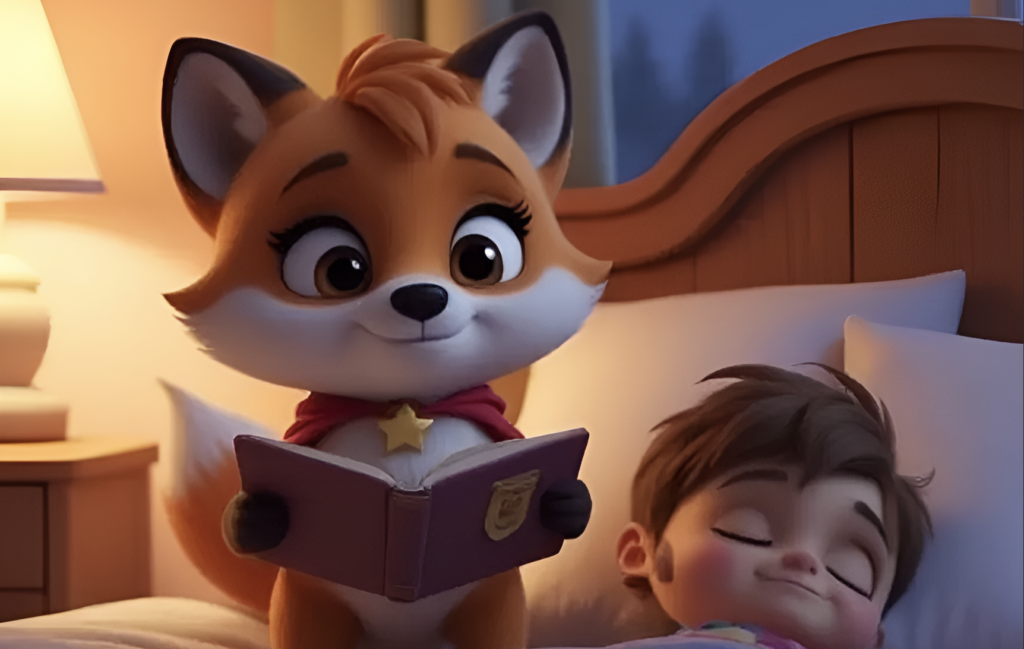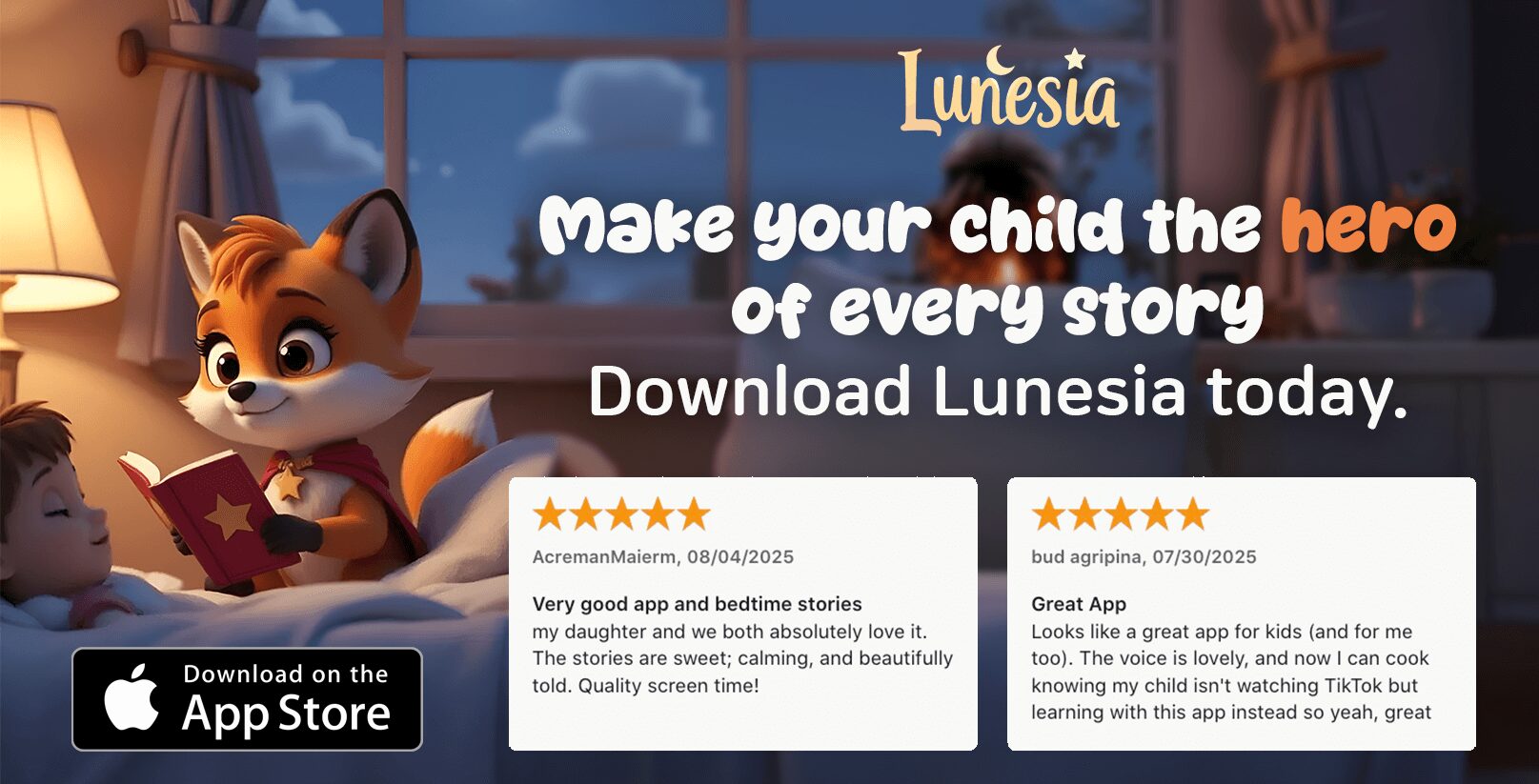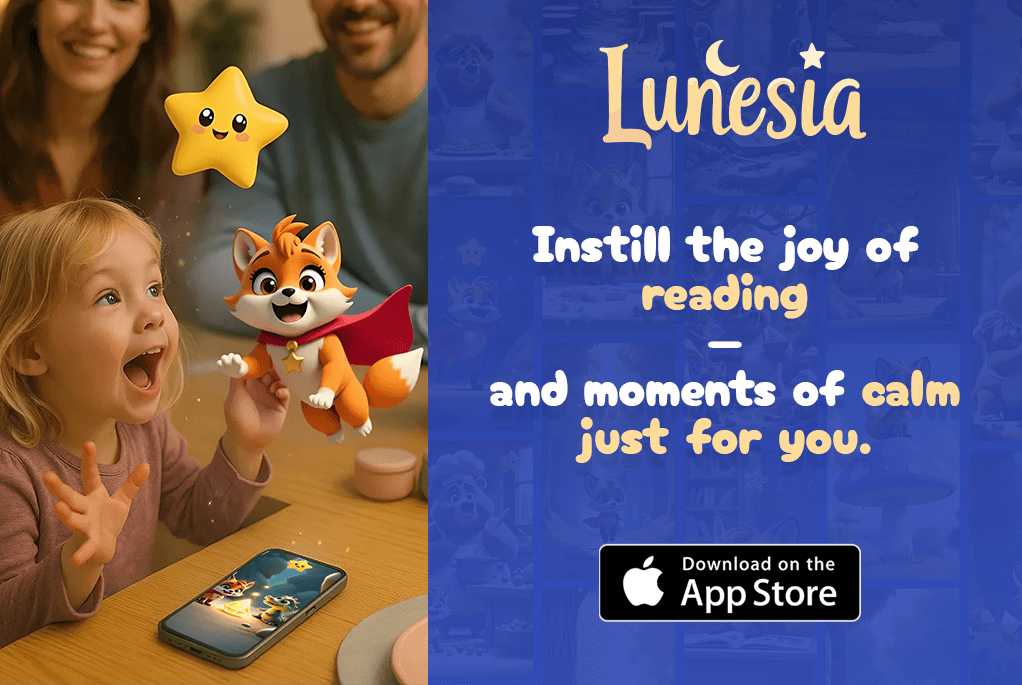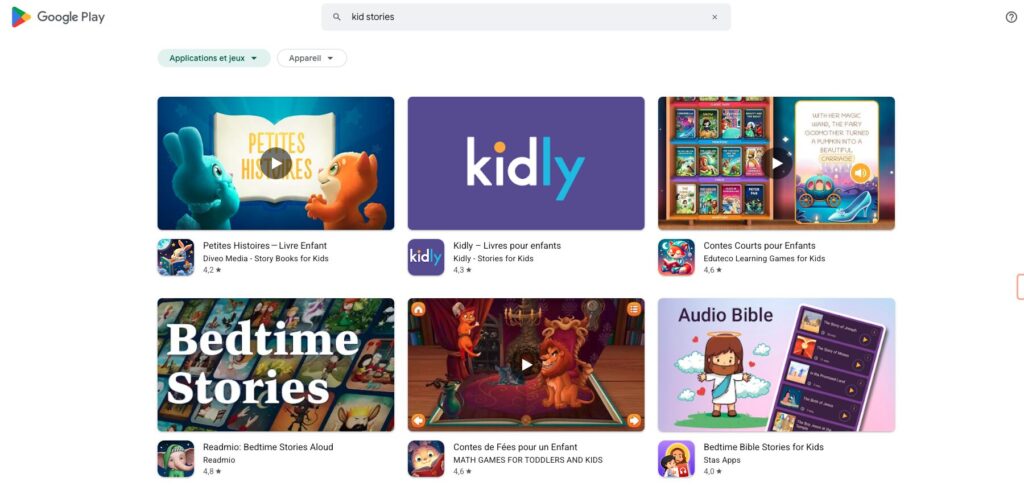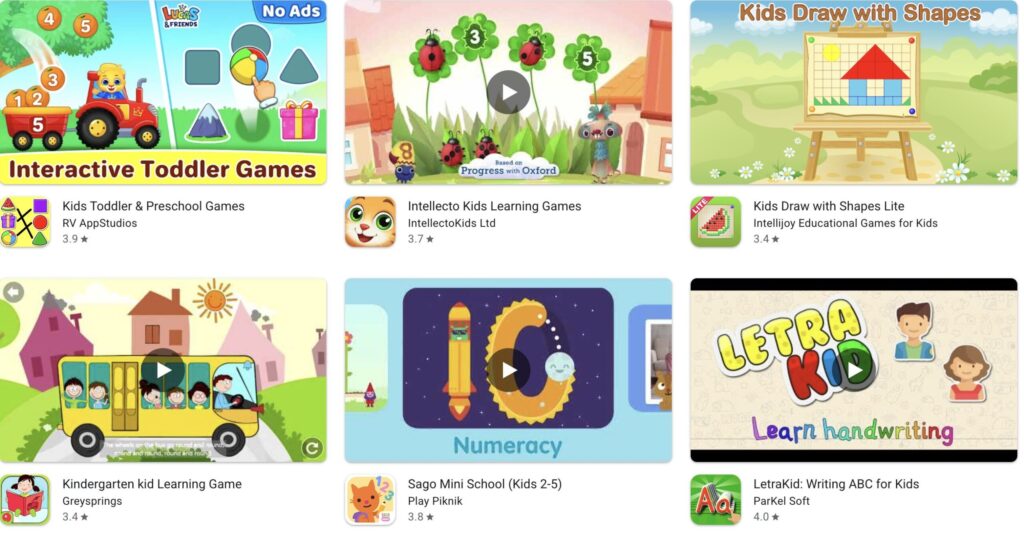I remember the days when I was desperate to squeeze in a simple story before bedtime, but I was so exhausted that all I could think about was flopping onto my bed and calling it a night. Sound familiar? There were evenings I’d fall asleep in mid-sentence while holding a children’s book—only to be gently nudged by a tiny hand whispering, “Mommy, are you awake?”
It was a total wake-up call (pun intended!). I knew I wanted my kids to grow up with a passion for reading, but I needed a practical, low-effort system that fit into my already chaotic schedule. So I started experimenting: short stories, audiobook snippets, storytelling apps… you name it, I tried it. And believe me, I made plenty of mistakes along the way—like picking stories that were way too long or forgetting to consider screen time limits that messed with our entire sleep routine.
But you know what? Through all those trial-and-error moments, I realized it’s totally possible to infuse reading into your day without burning out. Today, I want to share with you my journey—my pitfalls, my aha moments, and the simple strategies that worked (and which ones definitely did not). By the end of this, you’ll have a toolbox of tips to get your kids and yourself excited about bedtime, naptime, or even morning reading. And I promise—if I can do it, you totally can too!
Why Establishing a Daily Reading Routine Is So Important
When we talk about reading to our kids, we’re not just aiming to keep them busy for a few minutes. We’re investing in their future literacy skills, imaginative powers, and emotional intelligence. I often like to say: “Reading is like a magic key that opens every door to learning.” It’s not just about the words on a page; it’s about quality time and brain development
I learned this the hard way when I noticed my child’s vocabulary lagging behind her cousins. Cue the parent guilt and late-night Google searches: “Why is reading to kids important?” “Does reading help with speech development?” The answer was a big, resounding yes. Suddenly, I realized that skipping reading time was doing more harm than I thought. It wasn’t just me missing out on a tender moment—it was my kid missing out on an essential building block.
But how do you actually find the time without turning reading sessions into an overwhelming chore? That’s exactly where a well-planned bedtime routine, naptime routine, or even a morning routine can be a total lifesaver. It’s about weaving reading moments into your day when it’s most natural—not forcing them into an already crowded schedule. If you’re thinking, “That sounds great, but I already feel like I’m chasing my own tail,” trust me, we’ll get to the part where it becomes easier than you ever imagined.
And let’s be real: no one wants to add yet another item to an endless to-do list. The goal here is to show you how to make reading part of the existing rhythm of your home. You’ll see how you can even do this in just four minutes a day with the help of Lunesia, an app I wish I’d discovered ages ago. Don’t worry, I’m going to spill all the details on how I use it, and how you can start making reading time the highlight of your child’s day.
Addressing Common Obstacles That Keep Parents from Reading
We all have those moments when the day’s demands overshadow our best intentions. I’ve been there: a massive stack of dirty dishes, a toddler meltdown in progress, and a pile of laundry that seems to grow by the hour. Reading? More like a luxury that only supermoms and superdads can afford, right?
But let me tell you a secret: the biggest obstacle is often just getting started. There were evenings I’d skip reading altogether because it felt like I needed a whole production—picking the perfect book, setting the mood, making sure my kids were calm. And if they weren’t calm, I’d just give up and promise myself we’d read tomorrow. That “tomorrow” turned into a week, and before I knew it, we’d gone way too long without sharing a story.
Here are a few classic mistakes I’ve made (and how to avoid them):
- Overcomplicating the process: Feeling like you need to have a certain ambiance or special reading nook. Tip: reading on the couch while they snuggle up next to you is perfectly fine!
- Choosing the wrong time of day: Trying to read after they’re already overtired is a recipe for disaster.
- Ignoring consistency: Reading once in a blue moon might be fun, but it doesn’t build that strong reading habit.
- Forgetting to involve the child: If they’re wiggly or uninterested, ask questions about the story’s pictures, characters, or setting to keep them engaged.
- Skipping reading out of fear of short attention spans: Even two minutes can be beneficial. And guess what? Sometimes your child might surprise you and ask for more!
If any of this resonates, you’re definitely not alone. But here’s the good news: each of these pitfalls is so fixable. Ready for some real-world solutions? Let’s dive deeper, because I’m about to show you how to fit reading into your day like a puzzle piece that was always meant to be there.
Building the Perfect Naptime Routine for Storytime
One of my favorite hacks is slipping in a quick story right before naptime. Why naptime? Because toddlers, especially, benefit from a calming pre-nap ritual that helps them transition from high-energy play to restful sleep. I used to battle with my little one—she’d run around the room like a mini hurricane while I’d desperately try to corral her into bed. Those days are mostly gone now, thanks to establishing a reliable sequence that includes Lunesia.
Let me walk you through exactly what I do:
- Setting the scene: I dim the lights just a bit and place a cozy blanket on the bed.
- Open the Lunesia app: This is crucial. Instead of rummaging through books, I open the app, which has a new short story of the day ready to go.
- Invite the child to participate: I let my toddler pick whether we read the story out loud or use the audio feature. Sometimes she likes seeing the title image and photos, other times she just wants to snuggle while listening.
- Keep it short: The stories are typically under four minutes—perfect for those moments when you need something engaging without overstimulating them.
- Smooth transition to nap: Right after we finish, we do a quick diaper or bathroom break, close the curtains, and I gently lay her down.
Does it always go flawlessly? Of course not—there are days she resists because she wants to hear the story again or she’s just in a restless mood. But on the whole, this routine brings a sense of calm that’s far better than the chaos we had before.
A key piece of advice: never force the nap. Let the story be an incentive. Sometimes I’ll say, “We can only listen to a story if we’re lying down with our cozy blanket.” Nine times out of ten, she hops right into bed, excited for the story. It’s like magic.
Morning Routines That Turn Chaos into Quality Time
If your mornings are anything like mine used to be, they involve a mad dash for shoes, backpacks, and possibly your sanity. There’d be spilled cereal on the floor, mismatched socks, and at least one meltdown about wearing the “wrong” shirt. In the middle of that swirl of chaos, reading seemed impossible.
But here’s the fascinating part: once I started weaving in Lunesia for just a four-minute story—sometimes even just two minutes—mornings became more structured. I’d put on the day’s story while they ate breakfast. This served a dual purpose:
- It kept them entertained and less likely to squabble over who got the blue bowl.
- It also gave me a window to get organized without them wandering off.
I’m telling you, it was a game-changer. The short, engaging stories acted like a calming anchor in a hectic morning sea. By the time the story ended, they’d typically be done with breakfast, and we could segue to brushing teeth and getting dressed.
Pro tip: If your kids get super invested in the story, use that as leverage for cooperation. For instance, “Hey, if we can get dressed quickly, we’ll have time to listen to tomorrow’s new story too!” You’ll be amazed how a small reward like an interactive story can motivate them more than any lecture about punctuality.

Evening Bedtime Routines that Actually Work
Bedtime is traditionally the classic reading slot, but with so many distractions—screens, late dinners, leftover chores—it can become a casualty of exhaustion. I used to flop on the couch after bedtime routines, feeling like I’d just run a marathon.
However, I found that integrating Lunesia into our bedtime routine actually saved me energy and turned bedtime into a calmer, more predictable process. A typical evening sequence at our house now looks like this:
- Bath or shower (complete with bath toys and silly singing, because…why not?).
- Teeth brushing: This can be tricky, but we sometimes sing a toothbrushing song or do a countdown game (30 seconds on the top, 30 on the bottom).
- Pajamas on: I let them choose between two pairs to reduce any meltdown over what to wear.
- Story time with Lunesia: We either read the daily story out loud or use the audio feature. If we’re reading on-screen, I position the device so the blue light isn’t shining directly into their faces.
- Lights out, goodnight kisses, and a quick review of the day’s highlights (What was the best part of your day? Any new thing you learned?).
Why this works so well: The bedtime story is short, sweet, and consistent. It gives children something to look forward to, plus it signals that it’s almost time for sleep. And from a sleep science perspective, minimizing blue light is essential—so if you do use a device, either use a blue-light filter or keep it out of their direct line of sight.
You might wonder, “What if my child asks for more stories?” My rule of thumb is: one or two short stories max. If they’re really into it, I’ll preview the next day’s story and say, “That’s what we’ll listen to tomorrow—something to look forward to!” This prevents the routine from becoming dragged out, which can defeat the whole purpose.
Personal Lessons from My Own Parenting Journey
I want to highlight a few of my biggest “a-ha moments” that might spare you some of the mistakes I made:
- Short is powerful: You don’t need 20 minutes to make a difference. A four-minute story can be more memorable than a 20-minute story when both parent and child are fully engaged.
- Consistency trumps perfection: It’s better to read daily in short, consistent bursts than to force a long session once a week. Kids thrive on predictable routines.
- Audio vs. Read-Aloud: I used to feel guilty about using audio. But guess what? Kids still get a ton of benefits from hearing the words, the intonation, the storytelling. Pair that with a few pictures or let their imagination run wild, and you’ve got a win-win.
- Ask for their input: If you let kids have a say in how they engage with the story—pictures, audio, turning pages, picking the next book—they become more invested.
- Use reading as a bargaining chip: It’s not bribery; it’s a natural incentive. “If we finish cleaning up toys quickly, we’ll have time to check out the new story on Lunesia!” is often more effective than simply yelling, “Pick up your toys!”
I can’t tell you how many nights I spent thinking I was a “bad parent” because I was too tired to read a whole chapter book. The reality is, kids love short tales and repetitive, fun storylines. What matters is that you’re connecting with them through storytelling, even if it’s for a few minutes.
Step-by-Step Tutorial: Making the Most of Lunesia
Now that we’ve tackled why reading is crucial and how to integrate it into various parts of the day, let’s get super practical. Below is a step-by-step tutorial to help you maximize the Lunesia app for your family. Ready? Let’s do it!
- Download the App
- Head to the Apple App Store or Google Play Store.
- Search for Lunesia (it’s free!), and tap “Install.”
- Action Tip: Enable notifications so you get a friendly reminder about the Story of the Day.
- Create Your Profile
- Open the app and sign up with your email or social media account.
- Choose a fun avatar or let your kids pick one for the family—makes them feel involved.
- Pro Tip: Use your child’s name or nickname somewhere in the profile so they feel a personal connection.
- Explore the Daily Story
- On the main dashboard, you’ll typically see a “Story of the Day.” Tap on it.
- Decide if you want to read it yourself or listen to the audio version.
- Personal Favorite: I often read the first part, then switch to audio while I handle a quick chore like laying out pajamas.
- Customize the Experience
- If you prefer a more visual storytelling session, tap the photo icon to see accompanying illustrations.
- Alternatively, place the device away from your child’s direct gaze if you’re mindful of blue light.
- Bonus Tip: Some versions let you adjust font size—use that if your child is learning to read along.
- Practice Interactive Reading
- Ask open-ended questions about the story. For instance, “What do you think will happen next?”
- Pause periodically: Let them guess the next line or comment on the pictures.
- Use character voices or funny sound effects to keep them engaged if you’re reading aloud.
- Utilize Playlists
- Lunesia often allows you to create a “Favorites” playlist or queue.
- Curate a bedtime playlist of 2-3 stories or a morning playlist if you want variety.
- Why this matters: You can set it up once, and with a simple tap, stories will play in sequence—perfect for bath-to-bed or breakfast routines.
- Track Your Progress
- Some apps offer reading streaks, badges, or stats.
- Celebrate milestones! “We read 5 stories this week—awesome job!”
- Motivational Hack: Kids love seeing how many days in a row they’ve been consistent. It becomes a fun challenge.
- Schedule Reading Times
- Set alarm reminders or app notifications for 10 minutes before bedtime, naptime, or breakfast.
- Pro Move: Label them as “Story Time Alarm” so kids know what’s coming, and it creates anticipation.
- Share the Experience
- If you have multiple kids, let the older one “teach” the younger one how to use the app.
- Encourage them to talk about their favorite storylines, fostering sibling bonding.
- Community Aspect: Some parents love to share story highlights with friends—make reading a communal joy!
- Adapt and Evolve
- Life changes—maybe your child’s bedtime shifts, or you find a new morning routine.
- Revisit your approach: “Is the bedtime story still working, or should we move it to after dinner?”
- Stay flexible and let Lunesia be your wingman in adjusting seamlessly.
Following these steps, I saw a dramatic improvement in not only how often we read, but in how smoothly our routines flowed. My kids now look forward to bedtime (can you believe it?), and I’m not so wiped out from reading a lengthy book.
Comparing Other Storytelling Solutions
While I’m a huge fan of Lunesia, it’s good to know your options. Sometimes, different tools serve different needs. Below is a quick comparison table with a few popular storytelling platforms and why they might be beneficial.
| Name | Key Feature | Why It’s Good |
|---|---|---|
| Lunesia | Short audio + read-aloud stories | Perfect for quick routines, user-friendly |
| Audible Kids | Large library of audiobooks | Ideal for longer drives or older kids |
| Epic! | Digital library with educational angle | Great for kids who love reading e-books |
| YouTube Kids | Video storytelling | Visual learners enjoy the animations |
Which one’s best for you? It depends on your child’s age, your available time, and whether you want them to watch a screen or not. For me, Lunesia hits the sweet spot for quick, high-quality stories that actually fit into the day’s hustle.
So Why Does This All Matter to You?
If you’ve stuck with me this far, you know it’s not just about ticking a box that says, “Yes, I read to my kid.” It’s about creating memorable moments that enrich your child’s language skills, spark imagination, and even soothe them during potentially stressful transitions (like bedtime or naptime). I vividly recall how reading one simple story about a friendly dinosaur calmed my toddler after a day of overstimulation.
The routine-building aspect is life-changing, too. Once your kids know that after pajamas comes a fun story, they’ll be less likely to protest each step. It’s a win for your sanity and a win for their development.
Plus, reading together fosters a bond that is harder to create with just random cartoons or other fleeting distractions. You’re sharing an experience, discussing the characters, asking questions, and building a narrative memory together. Over time, this can become a cherished family tradition—one that your kids might even pass on to their own children someday.
I’ve personally found that even on my roughest parenting days—when I feel like everything is going wrong—closing the day with a gentle story can reset the mood. It’s my nightly reminder that no matter what happened earlier, there’s always space for love, learning, and a fresh start tomorrow.
Frequently Asked Questions
Is it okay if my child just listens to the stories instead of reading along?
Absolutely. Listening to a story can be just as beneficial for language development and imagination. It allows them to focus on the narrative without the added task of following words on a page. If they show interest later in seeing the text or pictures, you can always switch up the format.
What if my toddler wants multiple stories in a row?
Setting limits is perfectly fine. Try explaining beforehand: “We’ll listen to one story tonight, and if we have time tomorrow, we’ll do two!” Kids thrive on knowing the rules, especially when it comes to bedtime. If they’re really insistent, suggest looking at the pictures in their favorite story without reading it a second time—sometimes that satisfies the curiosity without pushing bedtime too late.
Do short stories really make a big difference?
Yes, they do. Even a two-minute tale has value. The key is consistency and engagement. Quick bursts of reading across the week add up, reinforcing vocabulary, listening skills, and emotional connections to storytelling.
How can I minimize the blue light effect during bedtime reading?
You can dim the screen brightness, enable a blue-light filter if your device has one, or simply place the device away from your child’s direct gaze. Audio-only mode is another excellent option since it eliminates the need for screen exposure entirely.
What if I can’t stick to a routine every single day?
Life happens. Don’t stress if you miss a day or two. The goal is consistency over time, not perfection. If you skip a day, just hop back into the routine as soon as you can.
Is reading on an app or device less effective than traditional books?
It depends on how you use it. Interactive reading—where you and your child discuss the story—is highly beneficial, whether it’s on paper or a screen. Digital tools like Lunesia can offer convenience and variety, which might actually help you read more frequently.
Can Lunesia help older children, too?
While Lunesia is fantastic for shorter stories, older kids might enjoy reading them independently or exploring more advanced tales if they’re available. You can also use it as a quick reading break between homework sessions for older children.
How do I encourage my child to talk about the stories afterward?
Ask open-ended questions—“What was your favorite part?” “Why do you think the character felt that way?” Give them space to answer. Sometimes kids come up with the most imaginative ideas when you let them lead the conversation.
Putting It All into Practice
By now, you’ve got a full arsenal of practical tips, personal anecdotes, and even a step-by-step tutorial to make reading an integral part of your family’s routine. If you’re still on the fence about trying a reading app, I’d encourage you to download Lunesia and test it out for a week—just seven days.
See how your kids react. Notice how your morning or bedtime routine shifts. Pay attention to whether your child starts asking more questions or referencing story characters throughout the day. You might even find them quietly humming or repeating lines from a story, which is a huge indicator that something is clicking in their developing brains.
Remember, this isn’t about being the “perfect parent”; it’s about taking small, doable steps that have a big impact over time. Reading doesn’t have to be an elaborate event. In fact, the simpler you keep it, the more likely you’ll stick with it—and the more your child will look forward to it.
So give it a go. Download the app, set your routine, and watch the power of short, consistent stories transform your family’s day-to-day life. And don’t forget, these moments are fleeting—soak up every giggle, question, and wide-eyed reaction while you can! Here’s to building a lifelong love of reading, one short story at a time.
Sweet dreams and happy reading!
